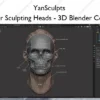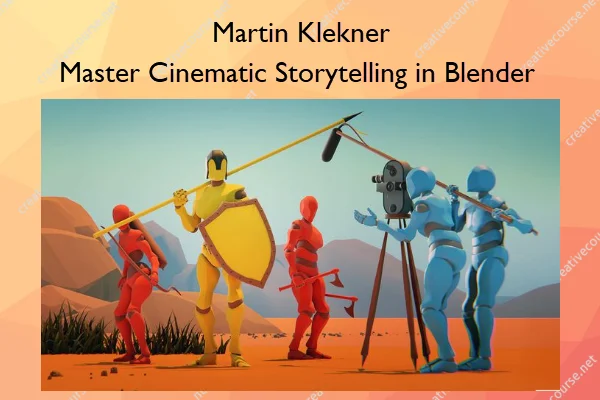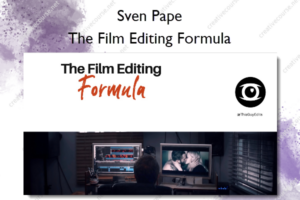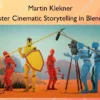Master Cinematic Storytelling in Blender – Martin Klekner
$69.00 $48.00
»Product Delivery: Within 7 days

Master Cinematic Storytelling in Blender Information
A film school for 3D Artists, all in one course.
How often do you get the time to practice your cinematic skills?
Many creatives and 3D artists, like yourself, get started because they have a story to tell or a film to make, you’re simply tired of consuming content; you want to CREATE.
Master Cinematic Storytelling gives you the tools to start creating and directing, it puts you straight into the director’s chair to shout “Action!” with confidence.
By mastering cinematic fundamentals, you ensure your story resonates, the camera work captivates, and your scenes come to life just as you envisioned. All the elements are in place and are just working together.
This course teaches you the fundamental theories and tricks behind cinematic storytelling, while providing the practical tools and 3D scenes that act as building blocks, letting you focus on directing and telling your stories in 3D straight away.
What You’ll Learn In Master Cinematic Storytelling in Blender
Chapter 1 & 2 – Getting Started and Blender Primer
In this chapter, we will cover the basics of Blender to ensure we are familiar with the software. We will start with an introduction to its interface and essential functions before exploring specific topics relevant to our learning journey.
Chapter 3 – Value
In this chapter, we will begin building our visual storytelling tools and vocabulary by exploring the concept of value. We will learn about different types of contrast and how to use them effectively in our artwork.
Chapter 4 – Colors
In this chapter, we will explore how color adds emotion to our compositions. We will learn key color terms, the art of color combination, and how to choose palettes that enhance storytelling.
Chapter 5 – Depth
In this chapter, we will focus on perspective in 3D art, while learning how to place background images, layer scenes by depth, and add atmospheric effects like fog.
Chapter 6 – Composition
In this chapter, we will dive into shot building, starting with composition. We will explore various types of composition and learn how to use it to make images feel right.
Chapter 7 – Lighting
In this chapter, we will explore the crucial role of lighting in cinematic art. We will learn how to use lighting in connection with contrasts, colors, and composition to enhance both character-centric shots and environments, all while serving the story.
Chapter 8 – Cinematic Tools
In this chapter, we explore important terms directly connected to cameras. We learn about different formats, frame rates, shot types and what types of lenses we can use, and the psychological effect they have. Lastly, we take a look at specific effects like depth of field, bokeh, vignette, film grain and more.
Chapter 9 – Camera Movement
In this chapter, we will dive into camera movements and their impact on cinematic storytelling. We will explore different camera types, learn how to create dynamic camera rigs in Blender, and discuss planning, lighting, depth of field, and motion blur for moving shots.
Chapter 10 – Cinematic Sequences
In this chapter, we will focus on creating short sequences, learning the rules and workflows needed to avoid mistakes that could disrupt the viewer’s experience. We will explore how to intercut shots effectively and use Blender to set up sequences with multiple cameras, ultimately putting together a final video.
Chapter 11 – Cinematic Breakdowns
In this chapter, we will break down the various shots created for the course trailer, focusing on their cinematic elements like camera placement, lighting, and scene setup.
More courses from the same author: Martin Klekner
Be the first to review “Master Cinematic Storytelling in Blender – Martin Klekner” Cancel reply
You must be logged in to post a review.
Purpose: We are committed to providing fast and reliable transportation services to our customers.
Delivery Time: We guarantee immediate or within 1 to 21 days of payment, depending on the course you have purchased.
Shipping Methods: We share orders through Google Drive, so please provide an email address that can access Google Drive.
Ordering Instructions: To place an order, please visit our website and select the desired product. Then, you can proceed with payment using the appropriate payment methods.
Contact: If you need more information or have any questions regarding our shipping policy, please contact us at the email address: [email protected].













Reviews
There are no reviews yet.